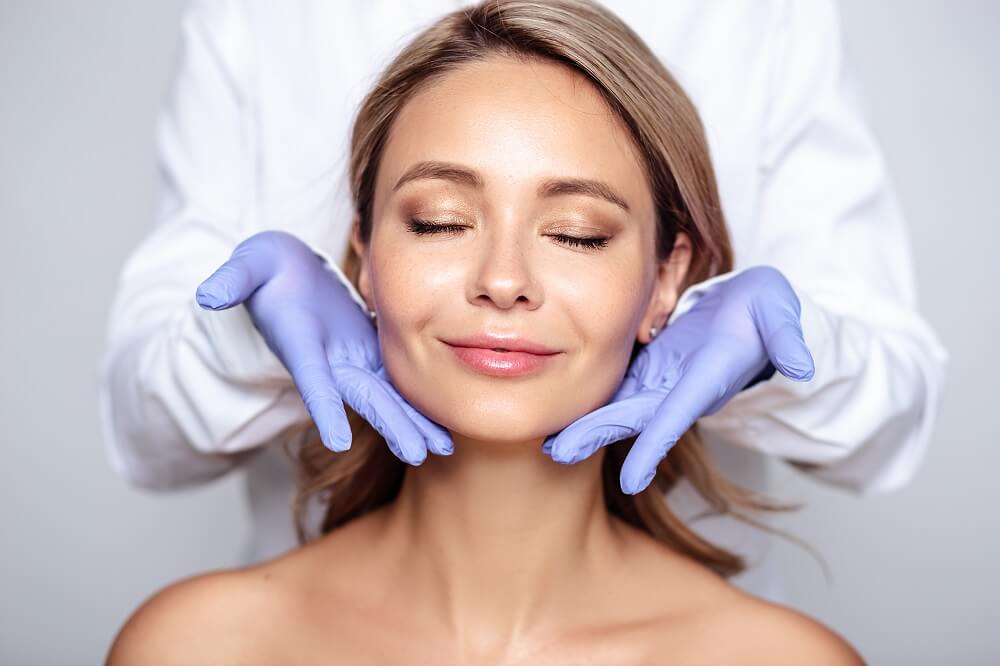Dermatologists rank as the number one influencer among 16 factors that impact consumers’ decisions to have a cosmetic procedure, according to the 2021 American Society for Dermatologic Surgery (ASDS) Consumer Survey on Cosmetic Dermatologic Procedures.
When selecting a practitioner, the specialty in which the physician is board certified and the level of the physician’s licensure ranked as primary influencing factors.
Consumers also rated dermatologists as the top resource for skincare product purchases and the physician of choice in seven of 10 treatment categories including injectable wrinkle-relaxers; laser/light therapy for skin redness, tone and scars; laser/light therapy for skin tightening; chemical peels; vein treatments; microdermabrasion; and tattoo removal.
FDA Approves Olumiant for Alopecia Areata
Olumiant (baricitinib) from Eli Lilly and Company is approved to treat adult patients with severe alopecia areata.
Olumiant is a Janus kinase (JAK) inhibitor. The efficacy and safety of Olumiant in alopecia areata was studied in two randomized, double-blind, placebo-controlled trials (Trial AA-1 and Trial AA-2) with patients who had at least 50 percent scalp hair loss as measured by the Severity of Alopecia Tool for more than six months. Patients in these trials received either a placebo, 2mg of Olumiant, or 4mg of Olumiant every day.
In Trial AA-1, 22 percent of the 184 patients who received 2mg of Olumiant and 35 percent of the 281 patients who received 4mg of Olumiant achieved adequate scalp hair coverage, compared to five percent of the 189 patients who received a placebo. In Trial AA-2, 17 percent of the 156 patients who received 2mg of Olumiant and 32 percent of the 234 patients who received 4mg of Olumiant achieved adequate scalp hair coverage, compared to three percent of the 156 patients who received a placebo.
Close Up with John S. Barbieri, MD, MBA
Patient-reported outcome measures can help dermatologists get a better idea about an acne patient’s experience, but which ones elicit the most useful information? John S. Barbieri, MD, MBA, a dermatologist at Brigham and Women’s Hospital in Boston, and colleagues sought to answer this question by reviewing 21 patient-reported outcome measures in a new study that appears in JAMA Dermatology. Here, Dr. Barbieri talks to Practical Dermatology® magazine about the findings and the role that these measures can and should play in clinical practice.
Why is this Topic Important to Study?
John S. Barbieri, MD, MBA: Patient-reported outcomes provided complementary information to clinical outcomes and are a valuable tool to ensure we are capturing the patient’s perspective in both routine clinical care and clinical trials. Although many patient-reported outcomes are available to assess health-related quality of life in patients with acne, little is known about which ones perform best.
Describe the Research and Your Findings
Dr. Barbieri: We conducted a systematic review of patient-reported outcomes for use among patients with acne, following the Consensus-Based Standards for the Selection of Health Measurement Instruments (COSMIN) criteria. We found that while some evidence on content validity and measurement properties were lacking for all the patient-reported outcomes that were evaluated, two can currently be recommended for use in acne clinical studies: the Acne-Q and CompAQ.
What Are the Next Steps?
Dr. Barbieri: Further research is needed to better define content validity as well as other measurement properties such as responsiveness, and interpretability of patient-reported outcomes used to assess health-related quality of life in patients with acne. For instance, the Acne-QoL and Acne Symptom and Impact Scale could also be recommended according to the COSMIN framework if additional evaluation of content validity is performed. In addition, there is a need for further study on the value of using patient-reported outcomes as part of routine clinical care.
Take 5 with Chris Marshall, CEO Wellbeam Consumer Health
With years of experience marketing leading consumer healthcare brands, Chris Marschall is now CEO at Wellbeam Consumer Health, a company that is building a diversified portfolio of differentiated brands with a strong e-commerce heritage, focused on “better-for-you consumer health and wellness solutions.” Among the four brands in the portfolio is TruSkin, which is expanding into brick-and-mortar retail to increase accessibility for consumers. Mr. Marschall discussed the brand and its growth strategy with Practical Dermatology® magazine.
Consumers Want Options
“We’ve seen that many consumers or patients are looking for alternatives that might be complementary to more traditional drug approaches or, in some cases, may be an option for mild conditions or for maintenance post-therapy. These alternatives may include more natural-based options that use plant-based ingredients, organic ingredients, and less harsh and more gentle alternatives. Consumers are also seeking transparency—reading labels and becoming more educated.
“TruSkin is a line of clean, plant powered facial skincare products. Our mission is to pioneer clean plant powered skin nutrition and make it understandable and accessible. A key way TruSkin delivers skin nutrition is through the purposeful blends we develop.”
Ingredients are Purposeful
“Our flagship product is our vitamin C serum. It features a plant powered blend with some unique, consumer-relevant ingredients, like botanical Hyaluronic Acid, organic aloe, organic jojoba, and other skin-loving ingredients. Most vitamin C products use ascorbic acid; TruSkin uses SAP or sodium ascorbyl phosphate, which is a different form of vitamin C that is known to be more stable and gentler on the skin versus ascorbic acid, which can be more harsh and irritating. Sodium ascorbyl phosphate is stable at the skin’s optimal pH level of five to seven, where ascorbic acid is stable at a two to three pH.
“In addition to our plant-powered blends, our products have no parabens, sulfates, phthalates, or PEGs, no fillers, and are 100% vegan and cruelty-free, as well.”
Dermatologists are Allies
“Our aspirations are to do more with the dermatology community. A lot of skincare brands are using consumer influencers who have their own perspective and experience in products. But dermatologists are the ultimate influencers, because they’re the experts in this space. If they appreciate and support what we’re doing, there’s significant credibility there for the patient.
“We are going to assemble a more formal dermatology advisory board that can give us ongoing support as we improve our formulations over time or launch new formulations. Ours might not be the only products a patient uses, but they’re a good option that they can incorporate if their dermatologists educate them on product differences and what to look for.”
Affordability Matters
“Part of TruSkin’s mission is to make sure that not only are we in front of the dermatologist, but we’re there with a more affordable option, because not everyone can spend $150 on a serum. We’re listening to what today’s consumer is telling us from a lot of different perspectives. It’s important to educate as many different populations about TruSkin. The dermatologist is right at the top of that list.
“Affordability is an advantage for us. All of our formulas are less than $30. TruSkin Vitamin C Facial Serum is $19.99 at Target, Walmart, Amazon, and others, including TruSkin.com. We’ve recently been asked by retailers to get on the shelf, which has been exciting. We’re going to also be available at Walgreens this fall.”
New Products are Launching
“We’re putting a lot of focus on launching differentiated products that deliver on unique benefits that are unlike other products in the marketplace. And I’m proud to say we just launched our new TruSkin SPF 30 mineral sunscreen, a clean and reef-friendly, 100% mineral sunscreen with non-nano zinc oxide. It includes the SAP form of vitamin C, as well as vegan marine collagen, cucumber, and aloe for additional skin benefits. And something not everyone may know, but computer screens also emit damaging UV rays, so sunscreen is important not only for being outside in the sun, but also for people who work remotely and are in front of the computer screens for long periods of time.
“It’s a great one-two punch with the mineral SPF plus the vitamin C. We hadn’t seen many products that have that kind of approach. And not only does it work well, it feels great during application and blends in easily with all skin tones.
“We will always be in innovation mode; listening to the consumer and the dermatologist and striving to meet their needs.”
Take 5 with Paul Singh, CEO, U.S. Dermatology Partners
One of the largest dermatology practices in the country with nearly 100 locations, U.S. Dermatology Partners provides care for 1.5 million patients annually. The organization spans eight states, predominantly in the American Southwest, as well as the Midwest and Mid-Atlantic. CEO Paul Singh spoke with Practical Dermatology® magazine about the organization and new initiatives.
Fully Integrated Care Addresses the Range of Patient Needs
“Our organization is fully integrated, and clinical care is coordinated across all of our locations within one organization. We do everything from medical dermatology, dermatopathology, surgical dermatology, as well as aesthetics. And we have physician leaders regionally and for subspecialties.
“Our purpose is to deliver ethical and exceptional patient care experiences.”
New Locations Will Expand Patient Access
“Patient access is a challenge in all healthcare subspecialties, particularly dermatology. Early detection is very important; preventative care is important. Our goal is to provide ethical and exceptional care, and it is really hard to provide that if it takes two or three months for someone to even get into the office. A lot of people in rural communities are driving 90 minutes or as much as two hours to be seen. Sometimes they forego care all together. Not everybody can take a day off to go see a dermatologist in the nearest city.
“Specifically, our goal with the U.S. Dermatology Partners Outreach Program is to open more than 30 new locations in the next three years across all the markets that we serve to further expand access to care. It has been challenging to get board-certified dermatologists to relocate to these rural areas full-time and to find high-quality staff. However, we have had tremendous interest from our existing team members to serve these communities. Our dermatologists will staff clinics to provide care for acne, psoriasis, eczema, skin cancer screening, rosacea, etc. These locations won’t be as large as our purpose-built centers that are vertically integrated, but we want to be able to provide more of that preventative care from the medical clinic. If somebody needs skin cancer surgery or some more advanced treatment, we can always refer them to one of our existing locations.”
TeleHealth Has Limited Effects in Expanding Access
“In spring of 2020, when COVID-19 hit, I was very proud of how quickly we were able to continue to provide care to our patients by leveraging telehealth and other technologies. Within a week, we were up and running, seeing 1,500 patients a day. Virtual care has benefits, but there are true limitations to providing healthcare virtually for many skin conditions. In many ways, technology can enable care, but in some instances, in-person visits are needed to get a firm diagnosis.
“Virtual care also has its limitations. There may be challenges with telecom coverage in many rural markets or poor/low video quality due to poor internet connection.”
U.S. Dermatology Partners Researc Institue is Launching
“We have several dermatologists within our organization who are active in conducting clinical trials, and who wish to expand that expertise across our organization to benefit our patients and other physicians. That was the motivation for creating the U.S. Dermatology Partners Research Institute, which currently has 55 active trials in which we’re involved through observational studies, interventional trials, and device trials. We have created a whole infrastructure around research and clinical trials with a clinical research director and team, and a clinical trial management system allowing sponsors real time data for their studies 24/7.”
“The goal of these trials is to assist in the discovery of more safe and accurate diagnostic testing, prognostic testing, and patient-centered therapeutics, and help shape the treatments of the future.”
“Our strengths include our robust experience in clinical trials across the organization, as well as our relationships with sponsors.”
Organic Growth Continues
“We have developed strong relationships with our doctors. When we add new physicians and team members, a lot of times that happens organically through referrals from physicians within the group, which we believe, is the best way to grow. You wouldn’t refer someone if you didn’t feel comfortable with them. We like to have the confidence of bringing people in this way.
“We’re also interested to see how the market overall continues to grow, especially in aesthetics. With inflation rising and some indicators suggesting an economic slowdown, I’ll be curious to see if the ‘red lipstick’ effect remains intact. But so far we see no signs of slowing down.”









